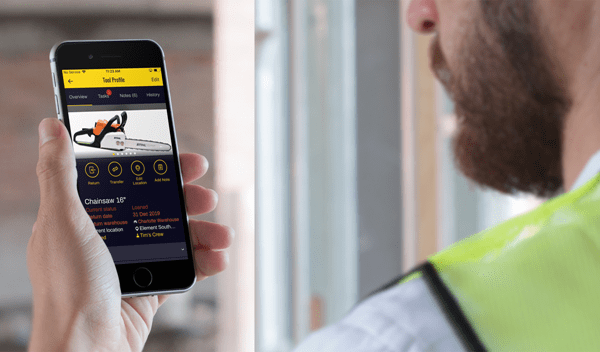Tool Tracking: Not All Heroes Wear Capes
Tool tracking. We know we need to do it. Most of us know we need to do it better. And none of us have the time or money to fool around with “solutions” that don’t really solve our problems. So, with the influx of new tool tracking technology hitting the market, you have to ask: is tool tracking really going to save the day?
Well, if “save the day” means “save time, save money, and improve operations,” then the answer is… it depends.
On what?
It depends on how you go about tracking tools. There are two main strategies:
Strategy 1: Beacon-Based Tool Tracking
Fueled by GPS and/or Bluetooth technology, beacon-based tool tracking relies on hardware (a beacon) to transmit a signal, and software (an app) to provide location information to a user via smartphone or tablet. On the surface, this sounds straightforward and effective. Unfortunately, user reviews tell a different story. The effectiveness of beacon-based technology breaks down hard and fast when you consider things like signal range and reliability, battery drain (of both phones and beacons), and the realities of applying (and securing) the beacons.
When you need to track an entire inventory of small tools and equipment, beacon-based tool trackers simply don’t solve the problem. Slapping beacons on every tool is like slapping bandaids on symptoms. Rather than chasing GPS signals to find misplaced or stolen tools, what if the tools weren’t misplaced in the first place? Imagine how much faster your company could find tools with group visibility and accountability.
This leads us to the second strategy: responsibility-based tool tracking.
Strategy 2: Responsibility-Based Tool Tracking
As opposed to relying on hardware and signals to track tools, responsibility-based tool tracking relies on a basic premise: build a culture of responsibility, and empower field workers to take ownership of keeping track of tools. This is foundationally different than hardware-centric solutions. This type of tool tracking app relies on a person-to-person workflow, following the natural course of tools in the field. As tools move from person to person, a responsibility-based tool tracking app helps your company enforce a transfer and acceptance of responsibility between workers. And, when there is a visible, digital record of this responsibility, folks are much less likely to mishandle the tools for which they’re responsible.
While accountability is the key to effective tool tracking, we’ve found that it’s also the piece most contractors (and tool trackers) fail to execute. So, essentially, for those who choose to implement a responsibility-based strategy, the culture of accountability becomes the company’s tool tracking superpower. While the other guys run around chasing signals, your company can rise strong on a foundation of group visibility, responsibility, and trust.
With responsibility-based technology, your entire staff becomes the tool tracker.
Activate and equip your company with the superpower of real accountability, and say goodbye to mishandled tools and mysterious disappearances. Solve the root of the tool tracking problem, and be the hero. (Cape optional.)
If you’d like to learn more about modern tool tracking applications check out ShareMyToolbox or call, 866.768.8665.
Click here: to see How our Tool Tracking App Works.
More Tool Tracking Tips available including these articles:
Article on how to stop Tool Hoarding
Tool Tracking Beacon Technology Guide
Technology Alone is Not the Solution to Tool Theft
Tool Tracking is a Clear Way to Improve Operations
See Tool Tracking Tips
Free and open access to articles, case studies and tool tracking best practices.
